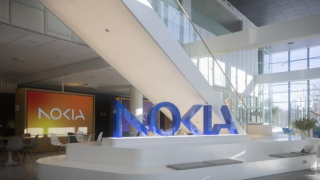The vulnerability of the markets in Italy, Portugal and Spain means that some fibre plans may even be put on hold depending upon how the Euro crisis develops. In Italy, for instance, the country’s unstable political scene and severe economic frailty is likely to have a strong impact on any fibre roll-out, with the Organisation for Economic Cooperation and Development predicting that the Italian economy will contract next year. It remains to be seen whether a memorandum of understanding between Telecom Italia, Fastweb, Wind, Vodafone Italia, Tiscali, BT’s Italian unit and 3 Italia for a national broadband network will come to fruition during 2012.
The UK also faces a potentially tricky year ahead, with any major broadband developments hinging on the proposed government funding for fibre roll-out to the final third of the population in rural areas. BT has been vying to secure the funding but their bid is being challenged by Fujitsu. If Fujitsu or any another party were to win the bid, this would certainly lead to a drastic shakeup of the UK market.
Other countries such as France, however, are expected to continue aggressive high-speed broadband deployments. The country’s larger operators – such as SSR, Iliad and Orange – have already embarked on FTTH deployment strategies which are expected to only gain momentum during 2012.
A more steady deployment of FTTH is expected to occur elsewhere. Holland appears in safe hands following the news that KPN has entered into a deal to acquire optical fibre company Reggefiber, and the company is predicted to continue its roll-out of fibre across the nation during 2012. Similarly Germany’s Deutsche Telekom is likely to announce some new public and private partnerships over the coming year.
Overall, the FTTH push in western Europe will be concentrated in areas where there is a strong business case. Interestingly, some network service providers such as Denmark’s TDC have even begun leveraging FTTH deployment to also include mobile backhaul, due to difficulty in presenting a business case for mass market FTTH.
Charlie Davies, principal analyst at Ovum stresses that European markets are unlikely to compare to Asian markets in terms of FTTH penetration over the coming year or into the future due to population dispersal making the business case fundamentally different. She also believes that the European Commission’s broad targets for fibre speeds and access across Europe are unlikely to be achieved. “As we’ve seen on the economic front it’s not a homogonous whole and there is always going to be some compromise between targets that are set at a European level and the reality of what can actually happen on the ground,” she adds.
Developments in 2012
In the UK BT’s wireless platform Openreach is expected to complete plans to make its fibre-based infrastructure available to an additional 114 exchange points. By 2012, the company plans to double FTTC download speeds of 40Mbps, and eventually increase this to 100Mbps technology.
France Telecom-Orange and SFR are expected to bring the benefits of fibre to the rural areas of France from next year. The five year plan will eventually serve 9.8 million households in agglomerations where both operators have redundant deployment projects.
The European Union has set a Digital Agenda for Europe to have 100% broadband coverage by 2013, and to increase coverage bandwidth to 30Mbps for all Europeans by 2020 with 50% or more of European households subscribing to internet connections above 100Mbps.




